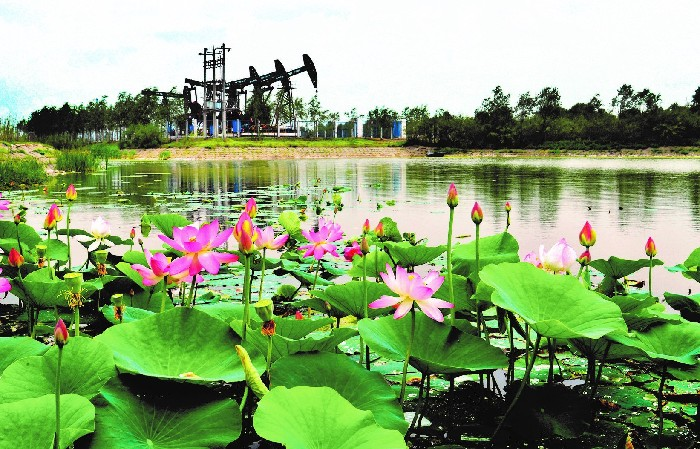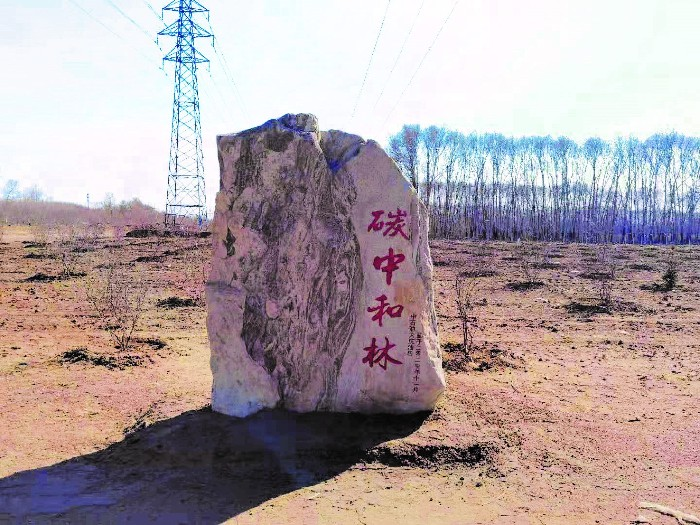On the eve of the 50th World Environment Day, PetroChina's 2020 Environmental Protection Bulletin was released on June 3: in 2020, China's oil and gas production equivalent achieved "gas over oil" for the first time, accounting for about 70% of the national output. The upgrading of oil quality has completed the road taken by Europe and the United States in the past 20 years in the past 10 years, and the anti-seepage transformation of more than 20,000 gas stations has been completed during the 13th five-year Plan period. All 60 tasks of eco-environmental protection in the Yellow River basin have been completed, and the investigation on the soil pollution of land used by enterprises in key industries has been highly affirmed by the Ministry of Ecology and Environment. 47 units were selected into the national green mine list, and so on.
This is the 22 consecutive years that PetroChina has taken the initiative to issue a communique to the outside world. Compared with the bulletin data in the past three years, we can find that the environmental protection indicators of the enterprise have shown an upward trend, and the eco-environmental quality has improved steadily.

Green and low-carbon Development to build a Beautiful China
In 2020, the party group of PetroChina quickly incorporated green and low carbon into the company's development strategy, and built a strategic system of "innovation, resources, market, internationalization, green and low carbon" to further highlight the green leadership.
Based on this, PetroChina clearly defines the "three-step" strategic plan of clean substitution, strategic succession and green transformation, and strives to approach the peak of greenhouse gas emissions around 2025. New energy and new businesses achieve a good layout in terms of clean substitution, achieve strategic succession of new energy and new businesses around 2035, achieve "near zero" emissions by 2050, and contribute to China's carbon peak, carbon neutralization and global climate goals through strategic transformation.

PetroChina has optimized and adjusted its energy structure, developed new energy business, continuously strengthened carbon emissions management, increased research and development of carbon trading and low-carbon technologies, actively developed CCUS (carbon capture, utilization and storage) industry, launched intelligent comprehensive energy stations, and went all out to provide green energy to the community.
Among them, PetroChina's share of natural gas production equivalent exceeded 50% for the first time in 2020 is undoubtedly the biggest bright spot. The essence of "gas over oil" is the increase of the proportion of clean energy in China's primary energy structure, which provides support for speeding up the transformation of economic development and the replacement of clean energy, so that the green water and green mountains are the "bottom strength" of Jinshan and Yinshan. People's livelihood index continues to improve, China's economic development is more healthy and sustainable.
At the same time, PetroChina has put new energy in a more prominent position, hydrogenation stations have been built and put into operation, and a new pattern of multi-energy complementarity is taking shape. For example, the CNPC hydrogenation station in the core area of the 2022 Winter Olympic Games in Zhangjiakou, Hebei Province, will provide power guarantee for more than 660 hydrogen vehicles for the Winter Olympic Games.
On the other hand, PetroChina continues to strengthen carbon emissions management, and all the enterprises that have been included in the pilot market for carbon emissions trading in 2020 have completed their compliance. In the face of the dual challenges of the COVID-19 epidemic and the shock of international oil prices, (OGCI) member companies of the China Petroleum and Oil and Gas Industry Climate Initiative have jointly signed and issued an open letter reiterating that they will continue to accelerate the action to reduce carbon emissions, which has won wide praise from the international community.
More importantly, PetroChina has always been the advocate and practitioner of CCUS technology, carrying out demonstration project construction in Jilin Oilfield as early as 2008, and has been in stable operation for 12 years by the end of last year, accumulating 2 million tons of carbon dioxide. Lin Ling, dean of the Resources and Environment Research Branch of the China Institute of Standardization, said: "PetroChina is the first in the country to combine CCUS research and development, technology and standards, and has played an exemplary and leading role."













